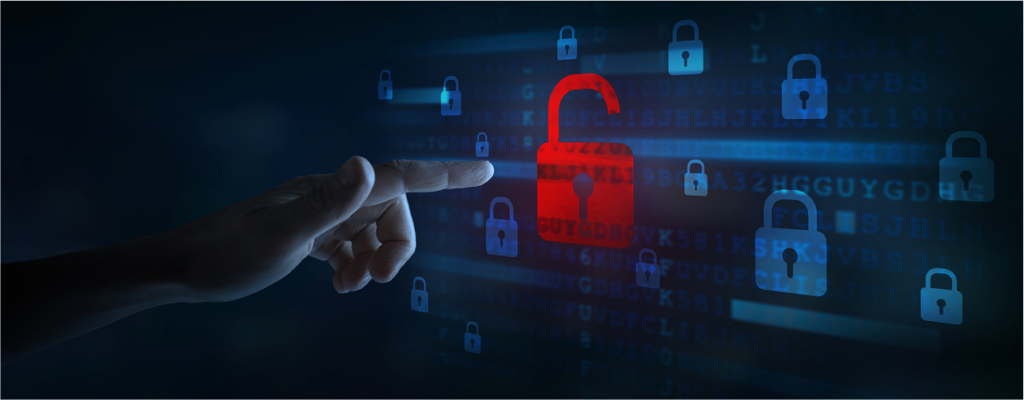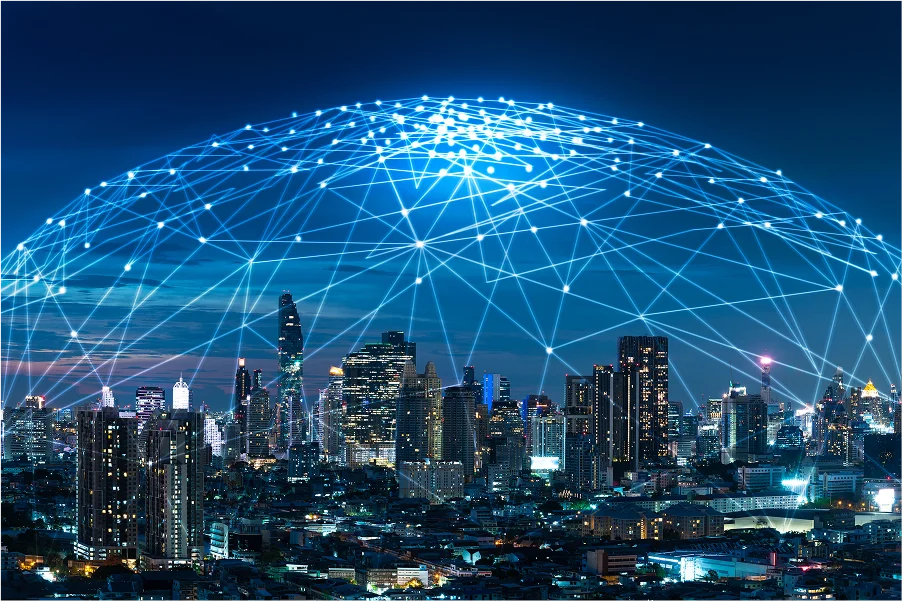The energy and utilities sector is the backbone of modern life—powering homes, businesses, and critical infrastructure around the clock.
However, the industry is increasingly targeted by cyber threats that aim to disrupt operations, compromise sensitive data, and jeopardize public safety. No wonder a robust cyber resilience framework is as much critical for energy and utility companies as it is for any other sector such as manufacturing or healthcare. It’s not an option, but an imperative to ensure the continuity and reliability of energy services.
In this blog, we’ll explore the unique cyber threats that energy and utility organizations face, the need for rising investments in cybersecurity in the energy sector, and the strategies these companies can adopt to stay ahead.
Let’s explore.
The Cyber Threats Looming in the Energy Sector
The energy sector is becoming increasingly vulnerable to cyberattacks. A recent report by KPMG LLP shows that approximately 45% of breaches in the energy sector are linked to third-party vendors, a rate significantly higher than the global average of 29%. And 67% of these breaches come from software and IT vendors outside the energy sector. This highlights the need for strong business resilience strategies and trustworthy partnerships.
Additionally, state-sponsored hackers are teaming up with civilian hacking groups to share tools that target critical infrastructure like utilities and transportation. These attackers are becoming more advanced, making it harder to detect and stop them. Their goals have also expanded beyond data theft; they now aim for operational disruptions, which could lead to blackouts, interrupted energy supplies, or even physical damage to infrastructure.
Unique Challenges Facing the Energy & Utilities Sector
The energy and utilities sector faces several key challenges :
- Emerging Technologies: The use of smart grids, IoT devices, and advanced metering creates new vulnerabilities that can be targeted by cyber threats.
- Outdated Systems: Many utilities still use old systems that lack modern security features, making them easy targets for attacks. Upgrading these systems can be challenging and expensive but is necessary for safety.
- Supply Chain Risks: The interconnectedness of supply chains means that a breach in one part can affect the entire network, including suppliers and maintenance teams.
- Regulatory Compliance: Energy companies must follow strict cybersecurity regulations, like NERC CIP and FERC guidelines, which require ongoing attention and resources to meet changing requirements.
- Physical and Digital System Integration: As operational technology merges with information technology, vulnerabilities increase, allowing cyber threats to cause real-world issues like power grid failures.
Consequences of Cyber Incidents
The impact of cyber incidents in the energy sector can be profound:
- Operational Disruptions : Cyberattacks can lead to significant service interruptions, affecting energy availability and service delivery. In worst-case scenarios, entire regions could face outages lasting days.
- Financial Losses : Beyond immediate remediation costs, companies may face regulatory fines, legal fees, reputational damage, and loss of customers. Globally, the average cost of a data breach has reached an all-time high of $4.88 million in 2024—a 10% increase over last year, according to IBM’s Cost of a Data Breach Report 2024.
- Safety Risks : Compromised control systems can pose direct threats to employee and public safety, especially when critical infrastructure is involved. Malicious actors can interfere with pressure valves, cooling systems, and pipeline controls.
- Loss of Consumer Trust: In a sector that relies heavily on public confidence, a single breach can erode customer trust and trigger long-term damage to your brand.
Why We Need to Invest More in Cybersecurity
To address the above challenges, global investment in critical infrastructure cybersecurity is rising. Across the energy and utilities sector, there’s a clear shift toward prioritizing resilience—driven by growing threats and tighter regulations.
This increased spending reflects a growing recognition: the cost of inaction far outweighs the price of building resilience. But spending alone isn’t enough—it must be guided by smart strategies that evolve with the threat landscape and deliver long-term protection.
Key Strategies You Can Adopt to Become Cyber Resilient
To fortify your organization’s cyber resilience, consider implementing the following strategies:
- Comprehensive Risk Assessments: Regularly evaluate your IT and operational technology (OT) environments to identify vulnerabilities. Understanding your risk landscape is foundational to effective defense. Include asset inventories and real-time scanning to map your digital terrain.
- Robust Third-Party Risk Management: Assess and monitor the security posture of vendors and partners. Establish stringent security requirements and conduct regular audits to mitigate supply chain risks. Embed cybersecurity clauses in contracts and procurement policies.
- Modernize Legacy Systems: Prioritize upgrading outdated systems to incorporate current security features. While this requires investment, the long-term benefits in risk reduction are substantial. Even partial modernization, like network segmentation or patch automation, can close critical gaps.
- Employee Training and Awareness: Human error remains a significant factor in security breaches. Regular training programs can equip staff with the knowledge to recognize and respond to potential threats. Run phishing simulations and teach secure handling of sensitive data.
- Incident Response Planning: Develop and regularly update an incident response plan. Simulate various attack scenarios to ensure readiness and swift recovery in the event of an actual breach. Incorporate roles, responsibilities, and escalation protocols.
- Adopt Advanced Security Technologies: Utilize solutions such as intrusion detection systems, endpoint protection, and anomaly detection powered by artificial intelligence to enhance threat detection and response capabilities. AI-driven platforms can identify suspicious patterns early.
- Invest in OT/IT Convergence Security: As OT and IT systems become more integrated, developing a unified security strategy is essential. This includes asset visibility, segmentation, and protocols that prioritize uptime and safety. Zero trust architectures and real-time telemetry monitoring are key.
- Real-Time Monitoring and Analytics: Leveraging real-time analytics and telemetry data can help detect anomalies before they escalate. Predictive maintenance powered by machine learning can also reduce system vulnerabilities and downtime.
- Cybersecurity Drills and Collaboration: Conduct regular cross-functional cybersecurity drills. Collaborate with other utilities and government agencies to share intelligence and coordinate defense strategies.
- Cyber Insurance: Consider cyber insurance as part of your risk management portfolio. Policies should cover incident response costs, legal liabilities, and operational disruptions.
The Role of Government and Industry Standards
Governments and regulatory bodies play a key role in shaping cyber resilience standards. The U.S. Department of Energy’s Office of Cybersecurity, Energy Security, and Emergency Response (CESER) supports critical infrastructure protection through initiatives that promote best practices and threat intelligence sharing.
Similarly, industry frameworks like the NIST Cybersecurity Framework provide a structured approach to managing cybersecurity risks. Aligning with such frameworks ensures consistency, compliance, and improved resilience across the board.
Looking ahead, regulatory expectations will only grow. Staying ahead of compliance is not just about avoiding penalties—it’s about building trust with consumers, investors, and partners.
Governments and industry standards are crucial for enhancing cybersecurity. For example, the U.S. Department of Energy’s CESER helps protect critical infrastructure by promoting best practices and sharing information about threats.
Similarly, industry frameworks, like the NIST Cybersecurity Framework, provide clear guidelines for managing cybersecurity risks. Following these frameworks helps organizations stay consistent, compliant, and resilient.
In the future, regulatory requirements will increase. Staying compliant is important not only to avoid fines but also to build trust with customers, investors, and partners.
Looking Forward
As energy and utility organizations face more complex threats, being resilient can differentiate you from those who struggle. Start by developing strong disaster recovery plans, business continuity strategies, incident response protocols, and employee training. Remember, resilience isn’t just about defense; it’s also a competitive edge.
No wonder you need proactive security frameworks that offer more than traditional risk management. By using predictive analytics, AI-driven threat detection, and automated responses, you can address risks before they become serious problems. And with the right strategies and a technology partner, you can create a strong foundation to keep your business secure and adaptable.

